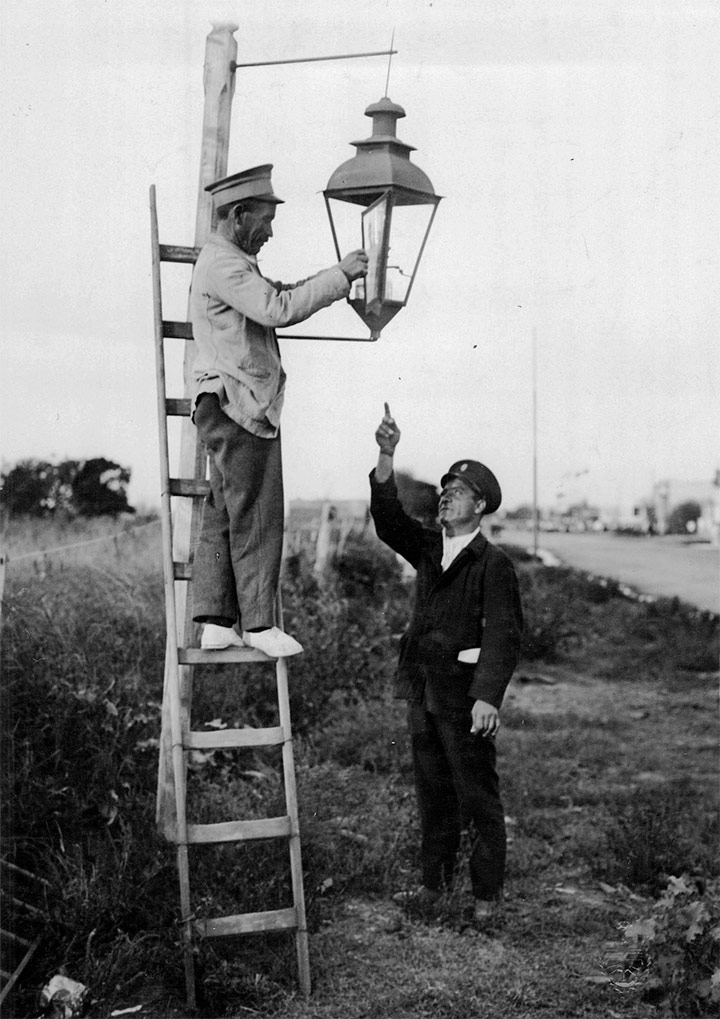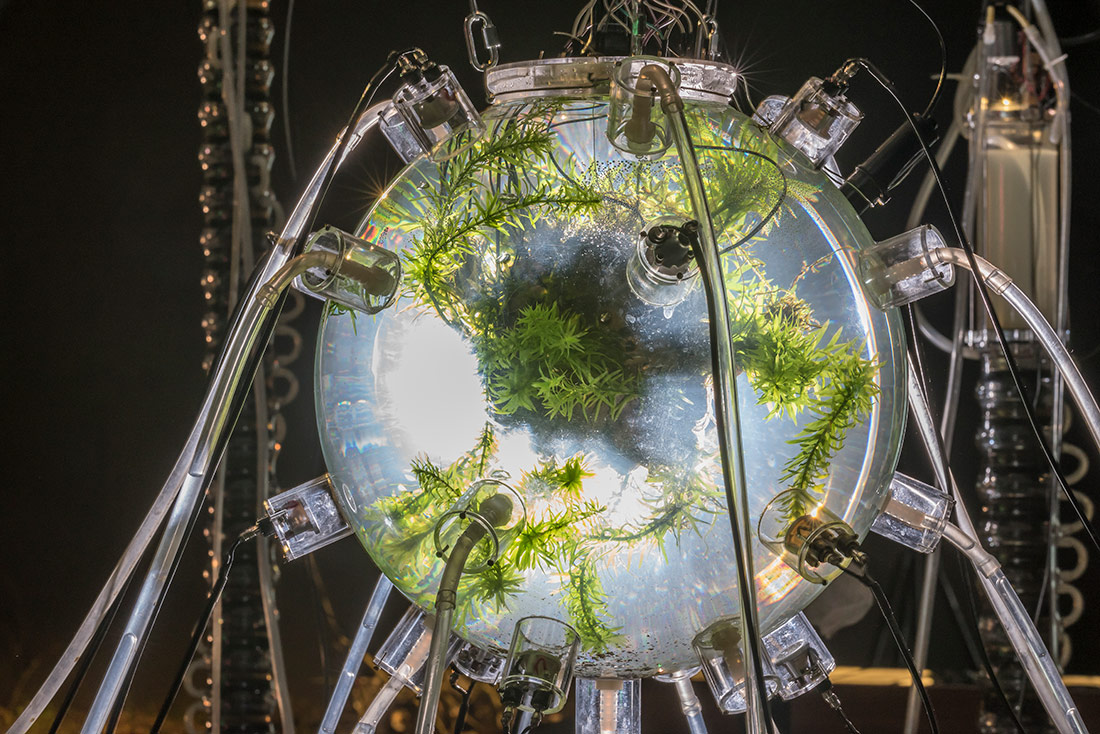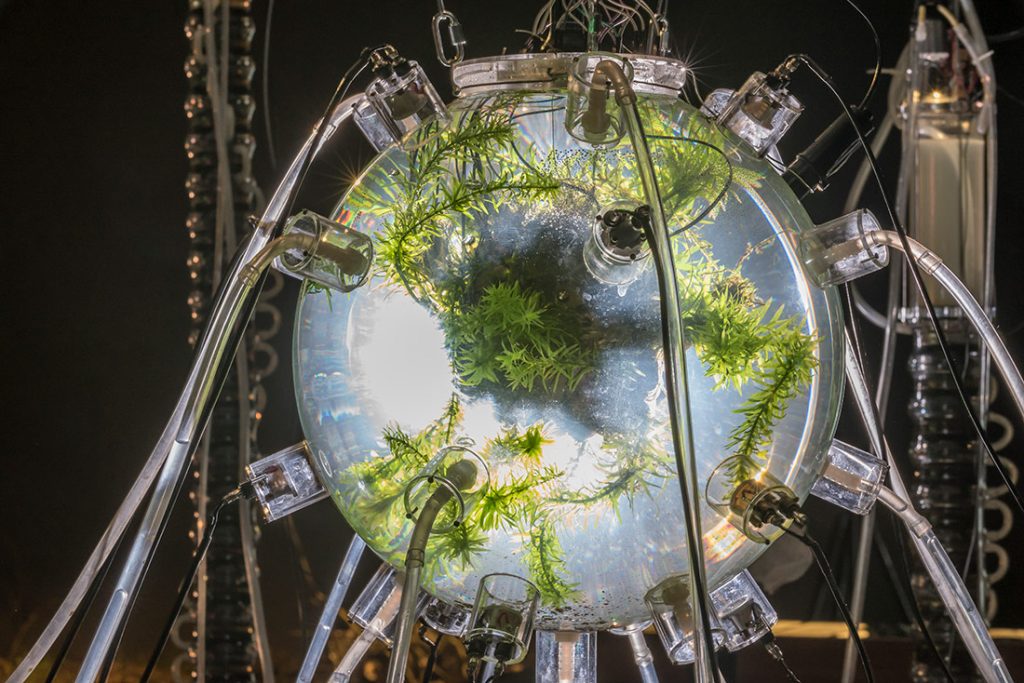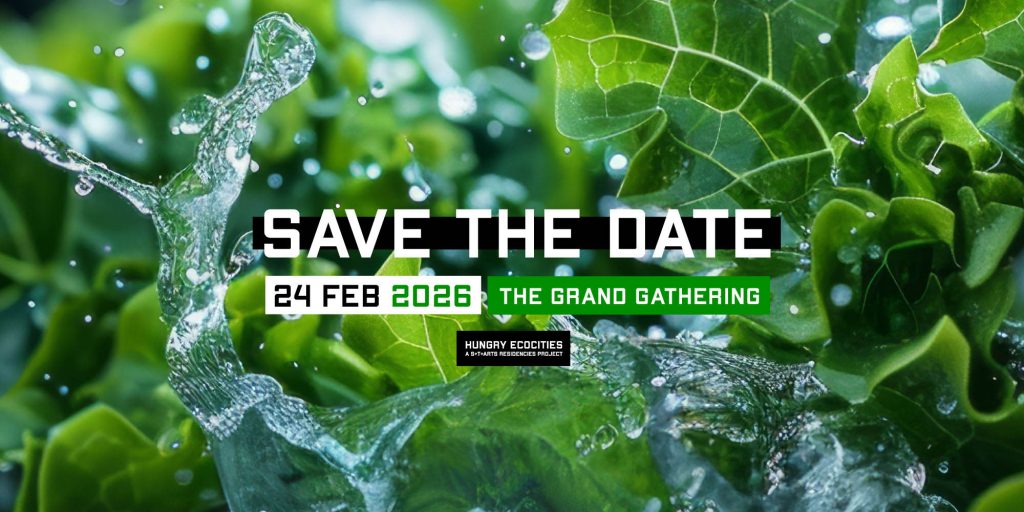Toward a “Bacterial Turn” in Art, Architecture and Design
by Jens Hauser
In art, architecture and cultural heritage, microorganisms have traditionally been considered a threat from the standpoint of bio-deterioration and conservation studies, so much so that – from Robert Koch to Louis Pasteur – bacteria have been described as “invading animals” and have been considered notorious pathological agents ever since science discovered the causality between disease and bacteria in the nineteenth century. Recently, however, prokaryotic single-cell organisms have been rehabilitated within the trend of a post-anthropocentric approach to deal with biodiversity loss, ecosystem health and urban transformation, as illustrated by the EU’s S+T+ARTS initiative “Repairing the present”.

Instead of contributing to the pervasive problem of city light pollution, artist Samira Benini Allaouat and her resolutely interdisciplinary team aim to install Geo-Llum in a community-driven urban rehabilitation zone to “high-light” and raise public awareness of the catalytic ability of soil bacteria such as the Geobacter species, discovered in 1987, to both bio-remediate contaminated soils and to convert chemical energy from organic substances into electric current. The project, supported by the CCCB as a regional S+T+ARTS centre, not only addresses contemporary microbial fuel cell (MFC) research, focusing on alternative and renewable energy sources to replace our current reliance on fossil fuels. It also emphasises that humans are deeply intertwined with microbial ecologies, prompting the question, “how might we integrate microorganisms to design more sustainable cities?” by re-enriching the urban microbiome, fostering better ecological interactions in order to increase biodiversity – understood beyond the common focus on plants and animals – and improving the health of cities’ multi-species inhabitants. The light sculptures, whose organic shapes are made out of biomaterials and also serve as rainwater collectors, are intended to empower the local population, but they also draw attention to the fact that microorganisms, after creating the major gases of the earth’s atmosphere (nitrogen, oxygen and carbon dioxide), continue to shape, and are pervasive in our en-vironments and in-vironments alike; they constitute, as Ted Krueger states, “two ecologies … the environment we inhabit [and] the microbiome: the one that inhabits us. Both of them are critical to our survival.”[1]
In parallel to the shift in scientific focus from the Human Genome Project (1990–2003) to the Human Microbiome Project (2007–2016), a European microbiome research initiative (International Human Microbiome Coordination and Support Action – IHMCSA) was launched in 2021 to improve human health and wellbeing. In addition, research-based art has largely contributed to a change in cultural perception by incrementally taking prokaryotic organisms as agents, material medium, motives, metaphors, and models of knowledge production. Artists have shifted guiding tropes from individual codes to cellular or microbial cities, from traditional views on human identity and individuality to that of the human body as an ecosystem or “holobiont”[2] in which a great variety of cellular species collaborate and compete.
Geo-Llum thus partakes in a larger movement of artists who address both these environmental and invironmental matters – for example, the gut/brain hypothesis, which suggests a lifelong influence of gut microbiota on brain health. To give some examples, in Thomas Feuerstein’s biotechnological sculpture Pancreas (2009-2012), engineered bacteria are the protagonists. Human neuroglia cells that grow into the glassware-contained shape of a human brain are fed by glucose, obtained by GMO bacteria able to break down cellulose from shredded books, while following a strict diet consisting exclusively of Hegel’s Phenomenology of Spirit. Metabolically, “food for thought” becomes “thought for food.”[3] Then there is Adam Brown’s installation The Great Work of the Metal Lover (2012), in which extremophile bacteria are employed for their innate capacity to metabolize toxic metals: in a bioreactor simulating a reduced atmosphere without oxygen, Cupriavidus metallidurans bacteria produce particles of 24 karat gold that the artist can harvest to create little nuggets, thus seemingly solving the ancient alchemist’s riddle of transmuting base metals into gold by synthesising an alchemical substance called the philosopher’s stone, or Lapis Philosophorum. Such extremophile bacteria not only play an important role in our understanding of the origins of life, they also serve in the development of geo-biological exploration tools, for example, bio-indicators and biosensors, and are used to filter toxic metals out of industrially polluted soils or waste water; in short, they clean up humankind’s mess and can turn our “shit” into gold. Meanwhile, in Mick Lorusso’s Microbial Schöppingen (2012), the artist harnessed electricity-producing bacteria to illuminate a miniature sculptural village as a gallery installation. And Gilberto Esparza uses Geobacter in his “gastrobots” (robots feeding on organic waste) to produce electric current and light – not for humans but for plants. His Plantas autofotosintéticas (Autophotosynthetic Plants) (2013-2014) consist of a symbiotic system producing energy from wastewater, converted into light which the aquatic plants in the centre of this distributed installation require to conduct photosynthesis, making them independent from natural light sources. Esparza deliberately breaks with the anthropocentric posture of conceiving of these wetware robots to carry out useful tasks for our own species only, although the ambiguity between the system’s “organs” evoking a circulatory and nervous system or a rudimentary brain, and the distributed amorphous network, is voluntarily entertained.

This prompts the question of how our human bodies may become more sensible to new relationships with the (largely invisible) microbial world, if “we have yet to understand microorganisms as potential collaborators or partners […]. The micro-logical scale must be integrated into the activity of designers and in order to do so we must shift our definition of our task from the creation of objects to the crafting of systems that include a significant biological component.”[4] It could be argued, as artist and architect Philippe Rahm does, that a “natural history of architecture”[5] needs to be established, based on the assumption that the discipline of architecture is born from the need to maintain the human body temperature at 37°C by providing shelter, while taking into account not only the impact of epidemics, vaccines and antibiotics, but also the generalised access to (geological, plant-based) fossil energy sources that led to the replacement of biological constructors by mechanical ones, up to the biology-based development of new CO2-“free” building materials and lighting techniques. Biologists today address bacteria themselves as “ancient architects” capable of building “highly patterned dwellings” via “interspecific sensory and coordinated physiological activity (‘consciousness’ … and ‘design’) to challenge the preconceived idea that conscious human architecture constitutes an exceptional feature.”[6]
In this sense, “co-corporeality” may be a strategy to address issues of “our” and other-than-human habitats and post-anthropocentric forms of the oikos, understood as “householding”, across disciplines and scales – such as an Austrian research project of the same name has recently done. Combining research into performative architectures, art, bio(techno)logy, artificial intelligence and machine learning, it proposes a materialised scenario of trans-species interaction, living and adapting materials, pigment choreographies and phototactic movements of microorganisms as a prospect for responsive architectures with flexible structures that adapt to bacterial change and future self-organising building techniques, including biopolymers and 3D printing.[7] Furthermore, with regard to the hype of “intelligent materials”, here, a systemic and critical approach prevails in which intelligence may not just refer to the mimicking of human cognition but rather to the decentralised intelligence of ecosystems – systems which are even capable of cleaning up human-kind’s mess in times of major ecological and atmospheric crises.
[1] Krueger, Ted (2016) “Microecologies of the Built Environment.” In: Terranova, Charissa and Tromble, Meredith (eds.): The Routledge Companion to Biology in Art and Architecture. New York: Routledge; p. 241.
[2] Margulis, Lynn and Fester, René (1991) Symbiosis as a source of evolutionary innovation. Cambridge MA: MIT Press.
[3] Feuerstein, Thomas and Hauser, Jens (2020) “From Metaphors to Metabols.” In: Adam Bencard, Martin Grünfeld, Jens Hauser and Louise Whiteley (eds.): Stofs(R)ifter. Metabolic Machines. Copenhagen: Medical Museion; p. 56.
[4] Krueger, ibid., p. 242-243.
[5] Rahm, Philippe (2020): Histoire naturelle de l’architecture – Comment le climat, les épidémies et l’énergie ont façonné la ville et les bâtiments. Paris: Éditions du Pavillon de l’Arsenal.
[6] Krumbein, Wolfgang E. and Asikainen, Celeste A. (2011) “Ancient Architects.” In: Margulis, Lynn; Asikainen, Celeste A. and Krumbein, Wolfgang E. (eds.): Chimeras and Consciousness. Cambridge MA: MIT Press; p. 63-65.
[7] Hauser, Jens (2022): “Co-Structuring New Corpo-Realities.” In: Imhof, Barbara; Mitterberger, Daniela and Derme, Tiziano (eds.): Co-Corporeality of Humans, Machines, & Microbes. Basel: Birkhäuser, p. 7-13. The publication can be downloaded for free: https://birkhauser.com/en/books/9783035625882
HAUSER, JENS (2022). Toward a “Bacterial Turn” in Art, Architecture and
Design. Article originally published on the CCCB LAB blog under CC-BY-NC 4.0 licence. URL: https://lab.cccb.org/en/toward-a-bacterial-turn-in-art-architecture-and-design/ [Last consulted: September 28th 2022]


